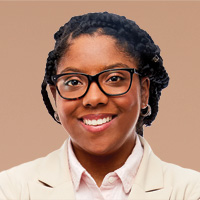What Is APR?
Knowing your APR is a good credit habit, even if you pay off your credit card balance every month.

Erin Bendig
While the best rewards credit cards can help you rack up cash back, points or miles on purchases, they usually come with high interest rates. Because of this, balances on your card can be challenging to pay off, especially if you don’t know your card’s annual percentage rate (APR).
According to LendingClub's recent research, 47.1% of cardholders carrying a balance don’t know their credit card APR, an alarming number, considering the average credit card interest rate was 24% as of February 2025.
So, what is APR? Here's what you need to know.
From just $107.88 $24.99 for Kiplinger Personal Finance
Become a smarter, better informed investor. Subscribe from just $107.88 $24.99, plus get up to 4 Special Issues

Sign up for Kiplinger’s Free Newsletters
Profit and prosper with the best of expert advice on investing, taxes, retirement, personal finance and more - straight to your e-mail.
Profit and prosper with the best of expert advice - straight to your e-mail.
What is APR?
The APR associated with your credit card is your card's interest rate. In other words, it's how much extra money you'll pay on any balance you don't pay off in full at the end of each billing cycle.
APR is typically stated as a yearly rate, and it can be fixed or variable. If you don't know your APR, you can find it in your credit card's terms and conditions. Or, when you review your statement it will appear on there.
Most credit cards operate on a variable rate, meaning the rate can change, often rising or falling in tandem with interest rates set by the Federal Reserve. When the Federal Reserve Board raises short-term interest rates, interest rates on credit cards and most other lending and savings products typically increase, like mortgages, home equity lines of credit, high-yield savings accounts and other loans.
Currently, there's mixed views on where interest rates go from here. The Federal Reserve ended 2024 with three rate cuts, but didn't follow suit at its January meeting. With talks of tariffs being imposed, the safe bet is there might be fewer rate cuts in 2025, especially if those tariffs increase inflation.
How does APR affect me?
If you’re carrying a balance on a credit card with a high APR, plan to pay it off as soon as possible without adding any new purchases, or else you'll be stuck with expensive interest payments and can end up in credit card debt.
If you are struggling to keep up with interest payments on your credit card, applying for a balance transfer credit card to pay off credit card debt can be beneficial. Balance transfer credit cards offer an introductory 0% APR for qualifying balance transfers.
The length of these introductory periods varies, but some of the best balance transfer cards allow you to avoid interest rates for up to 21 months. You can also check to see if any current cards in your wallet are offering balance-transfer promotions.
Keep in mind that with any balance transfer, if you don’t pay your balance by the time the promotion ends, any balance left over is generally subject to your card’s normal interest rate. And read the fine print — your balance could be subject to retroactive interest charges.
Use cash back incentives
Another way to tackle interest is to use your card for everyday purchases like groceries and utilities. Many credit card issuers offer higher cash back incentives when you use your card for travel expenses, grocery, dining out or shopping. To demonstrate, the Blue Cash Preferred® Card from American Express gives you 6% cash back on grocery purchases for the first $6,000 charged. Once you exceed this limit, it defaults to 1% back.
The key with this approach is to alter how you pay for budget items. Say you have a statement balance of $400, and if you don't pay that in full next month, then you'll have interest accrue. Instead of using your debit card for groceries and gas, use your credit card and charge these expenses. Once they clear, pay them off immediately.
This approach achieves multiple things: One, it helps you pay off more of your statement balance each month. Two, with the cash back rewards you earn, you could pay off interest quicker in the form of statement credits. Lastly, you're still spending within your budget, you're just altering the payment method you use.
Related Content
- What is a Good Credit Score?
- What Are Credit Card Hacks and Do They Work?
- Credit Score vs. Credit Report: What's the Difference?
Profit and prosper with the best of Kiplinger's advice on investing, taxes, retirement, personal finance and much more. Delivered daily. Enter your email in the box and click Sign Me Up.

Rivan joined Kiplinger on Leap Day 2016 as a reporter for Kiplinger's Personal Finance magazine. A Michigan native, she graduated from the University of Michigan in 2014 and from there freelanced as a local copy editor and proofreader, and served as a research assistant to a local Detroit journalist. Her work has been featured in the Ann Arbor Observer and Sage Business Researcher. She is currently assistant editor, personal finance at The Washington Post.
- Erin BendigPersonal Finance Writer
-
 Holiday Tax Scams: 'Tis the Season to be Wary
Holiday Tax Scams: 'Tis the Season to be WaryTax Scams Navigating tax tricks of the holiday season may be daunting, but don't let that destroy your festive spirit
-
 Metro by T-Mobile Is Giving Away This Samsung Galaxy A16: Which Plans Are Eligible?
Metro by T-Mobile Is Giving Away This Samsung Galaxy A16: Which Plans Are Eligible?Metro by T-Mobile is offering free Samsung Galaxy A16 phones on eligible plans right now. Here’s how the deal works.
-
 I Drive and Collect Classic Cars: Here’s How I Got Started
I Drive and Collect Classic Cars: Here’s How I Got StartedAre classic cars a hobby or an investment strategy — or both? Either way, the vintage car scene is much cooler and more affordable than you think.
-
 Metro by T-Mobile Is Giving Away This Samsung Galaxy A16: Which Plans Are Eligible?
Metro by T-Mobile Is Giving Away This Samsung Galaxy A16: Which Plans Are Eligible?Metro by T-Mobile is offering free Samsung Galaxy A16 phones on eligible plans right now. Here’s how the deal works.
-
 I Drive and Collect Classic Cars: Here’s How I Got in the Game Without Spending a Fortune
I Drive and Collect Classic Cars: Here’s How I Got in the Game Without Spending a FortuneAre classic cars a hobby or an investment strategy — or both? Either way, the vintage car scene is much cooler and more affordable than you think.
-
 My First $1 Million: Retired Middle School Teacher, 68, North Carolina
My First $1 Million: Retired Middle School Teacher, 68, North CarolinaEver wonder how someone who's made a million dollars or more did it? Kiplinger's My First $1 Million series uncovers the answers.
-
 4 Financial To-Dos to Finish 2025 Strong and Start 2026 on Solid Ground
4 Financial To-Dos to Finish 2025 Strong and Start 2026 on Solid GroundDon't overlook these important year-end check-ins. Missed opportunities and avoidable mistakes could end up costing you if you're not paying attention.
-
 9 Types of Insurance You Probably Don't Need
9 Types of Insurance You Probably Don't NeedFinancial Planning If you're paying for these types of insurance, you may be wasting your money. Here's what you need to know.
-
 I'm an Insurance Pro: It's Time to Prepare for Natural Disasters Like They Could Happen to You
I'm an Insurance Pro: It's Time to Prepare for Natural Disasters Like They Could Happen to YouYou can no longer have the mindset that "that won't happen here." Because it absolutely could. As we head into 2026, consider making a disaster plan.
-
 The Future of Philanthropy Is Female: How Women Will Lead a New Era in Charitable Giving
The Future of Philanthropy Is Female: How Women Will Lead a New Era in Charitable GivingWomen will soon be in charge of trillions in charitable capital, through divorce, inheritance and their own investments. Here's how to use your share for good.
-
 The Retirement Donor's Checklist: Key Deadlines by Gift Type
The Retirement Donor's Checklist: Key Deadlines by Gift TypeRetirees have some charitable contribution options that can help avoid spikes in income from RMDS and capital gains.